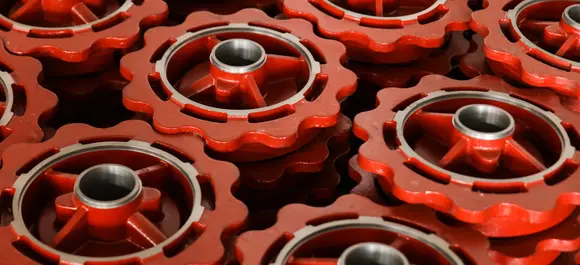Mobile:+86-311-808-126-83
Email:info@ydcastings.com
English
Optimizing Suction Impeller Design for Enhanced Fluid Flow and Efficiency in Pump Systems
The Importance of Suction Impellers in Modern Pumping Systems
In the world of fluid mechanics and pump technology, suction impellers play a pivotal role in the efficiency and effectiveness of various pumping systems. These vital components are commonly found in centrifugal pumps, where they facilitate the movement of liquids through the creation of pressure differences. Understanding the functionality, design, and applications of suction impellers is essential for engineers, technicians, and anyone involved in the pumping industry.
At its core, a suction impeller is designed to draw fluid into the pump. The impeller consists of blades mounted on a rotating hub. When the impeller spins, it generates a centrifugal force that pushes the liquid outward and, as a result, creates a low-pressure area at the center of the impeller. This low-pressure zone effectively pulls the fluid into the impeller from the suction side of the pump. The efficiency of the impeller directly influences the pump's performance, making it crucial to select the appropriate design for the intended application.
One of the main factors that affect the performance of suction impellers is their geometry. The shape, size, and angle of the blades all contribute to the impeller's ability to move fluid efficiently. For instance, impellers with larger diameters and a greater number of blades can increase fluid flow rates, while those with specific blade angles can optimize the energy transfer from the impeller to the fluid. Additionally, the material used to construct the impeller must withstand the pressures and corrosive properties of the fluid being pumped, making material selection an important consideration in design.
suction impeller

Suction impellers must also address potential challenges, such as cavitation—a phenomenon that occurs when local pressure drops below the vapor pressure of the fluid, leading to the formation of vapor bubbles. These bubbles can collapse violently when they move to a higher pressure zone, causing damage to the impeller and other components. To mitigate cavitation, engineers often design impellers with features that enhance suction performance, such as inducer stages or modifying the blade contour to improve the flow characteristics at low pressures.
Applications of suction impellers extend across various industries, including water treatment, agriculture, chemical processing, and oil and gas. For instance, in municipal water supply systems, suction impellers are essential for transporting water from reservoirs to treatment plants and distribution networks. In agricultural settings, they are used in irrigation systems to efficiently move water over vast fields. The chemical and petrochemical industries rely on these impellers for the safe and efficient transport of various liquids, from benign solvents to hazardous materials.
Moreover, the advancement of technology has led to the development of more sophisticated impeller designs, such as the use of computational fluid dynamics (CFD) simulations. These simulations enable engineers to predict fluid behavior within the pump more accurately, facilitating the design of suction impellers that optimize efficiency while minimizing energy consumption. As sustainability becomes a key focus across all industries, improving the efficiency of suction impellers contributes significantly to reducing the overall energy footprint of pumping systems.
In conclusion, suction impellers are integral to the functionality and performance of modern pumps. Their design and operation have a direct impact on fluid transport efficiency, making them a crucial area of study in engineering. As technology continues to evolve, so too will the designs and applications of suction impellers, paving the way for innovations that enhance performance across various industries. Understanding these components is essential for anyone involved in pump systems, as efficient fluid movement is vital to many critical processes in our daily lives.
-
Efficient Automobile Water Pump: Reliable Cooling for Engine ManifoldsNewsSep.01,2025
-
Premium Fan Housing & Motor Casing for Optimal AirflowNewsAug.31,2025
-
High-Performance Automobile Water Pump & Electric SolutionsNewsAug.30,2025
-
Expert Stainless Steel Casting | Precision & Durable Metal PartsNewsAug.29,2025
-
Precision Metal Castings: Aluminum, Stainless Steel & Die CastingNewsAug.28,2025
-
Superior Aluminum Castings in Automotive Engine PartsNewsAug.22,2025











